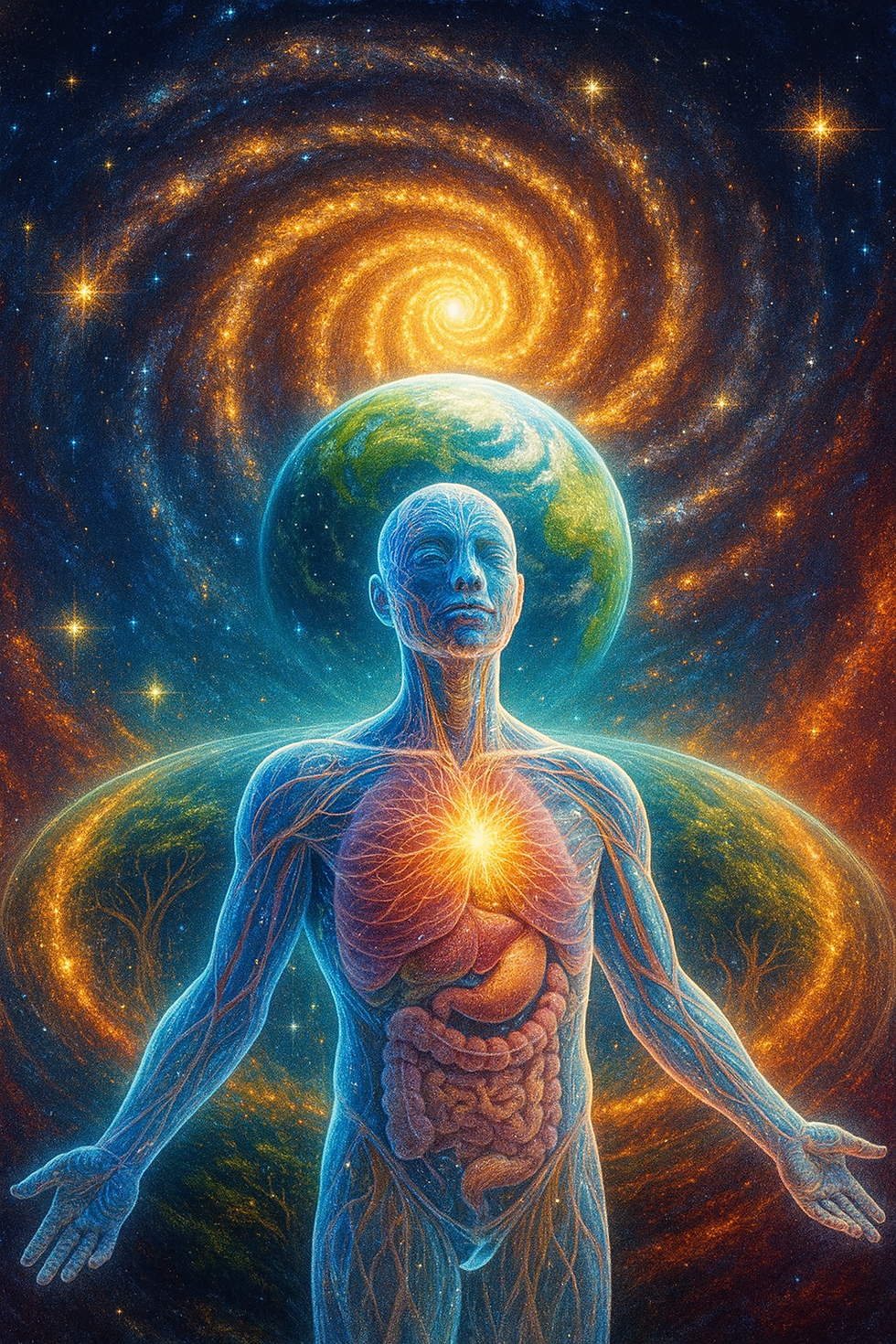Evolution as a Self‑Organizing Force: Toward a Cosmological Principle of Emergence
- 4marcusrobinson
- Nov 8
- 4 min read
by Dr. Marcus Robinson | DCH IHP

Abstract
This paper advances the thesis that evolution can be understood as a self‑organizing force, comparable in scope to fundamental physical forces. By tracing the arc of emergence from the Big Bang through atomic and molecular formation to biological life and human consciousness, it argues that self‑organization is a universal principle of complexity. Drawing on complexity science, thermodynamics, and systems philosophy, the paper situates evolution as both a creative and co‑creative force. It further proposes symbolic frameworks—mandalas, ritual cycles, and meta‑atlases—as interpretive tools for embedding this principle within human practice and institutional scaling.
Introduction
The universe’s unfolding reveals a consistent trajectory: matter and energy organize into increasingly complex structures. This trajectory challenges reductionist accounts of randomness and points toward a deeper principle of self‑organization. Evolution, reframed as such a principle, becomes not merely a biological mechanism but a cosmological force. This paper explores that reframing, situating evolution alongside gravity, electromagnetism, and the strong nuclear force as a driver of coherence and neg‑entropy.
The Arc of Emergence: From Physics to Biology
The Big Bang produced fundamental particles, which stabilized into atoms. Stellar nucleosynthesis forged heavier elements, enabling chemistry to flourish. On Earth, molecules combined into self‑replicating structures, initiating biological evolution. Each stage represents a leap in complexity, driven by intrinsic tendencies toward order. Scholars of complexity science argue that such leaps exemplify self‑organization, where systems spontaneously generate coherence without external control (Kauffman, 1993; Prigogine & Stengers, 1984).
Evolution as Creative and Co‑Creative Force
Two interpretations emerge:
Creative Force: Evolution is embedded in the universe’s laws, inseparable from its unfolding (Smolin, 1997).
Co‑Creative Force: Evolution amplifies the original impulse of creation, channeling energy into structured forms (Deacon, 2011).
Both views converge on the recognition that evolution is active, not passive—a principle shaping atoms, molecules, and organisms into coherent wholes.
Self‑Organization and Neg‑Entropy
Self‑organization describes systems that spontaneously generate order. Examples include crystal lattices, chemical oscillations, and biological morphogenesis. By reframing evolution as self‑organization, we recognize that the same principle underlies both physical and biological processes. Just as the strong nuclear force binds protons and neutrons, self‑organization binds complexity into coherent structures across scales (Camazine et al., 2001). Schrödinger (1944) described life as “feeding on negative entropy.” Biology thus becomes the most vivid expression of self‑organization, sustaining complexity against entropy’s drift.
Human Evolution and Reflexivity
Humans embody self‑organization in physiology and consciousness. Our ability to reflect on evolution itself creates a recursive loop: the force that shaped us becomes the subject of inquiry. Varela, Thompson, and Rosch (1991) argue that consciousness is an emergent property of embodied systems, further evidence of self‑organization at higher scales.
Symbolic Mapping and Ritual Anchoring
To embed this principle in human practice, symbolic frameworks can be employed:
Mandalas: Visual maps of cyclical order, representing coherence across scales.
Ritual Cycles: Ceremonies marking emergence, renewal, and transformation, mirroring cosmological rhythms.
Meta‑Atlases: Archival systems capturing cohort‑level reflections, feedback loops, and symbolic anchors.
These tools operationalize self‑organization within communities, institutions, and collective healing practices.
Toward Institutional Scaling
Recognizing evolution as a self‑organizing force has practical implications:
Education: Teaching complexity as a universal principle.
Healthcare: Designing adaptive protocols that mirror biological self‑organization.
Governance: Embedding feedback loops and symbolic anchors in policy design.
Outreach: Multimedia campaigns that narrate evolution as a cosmological story of coherence.
Such scaling transforms abstract philosophy into actionable frameworks.
Conclusion
Evolution, reframed as self‑organization, emerges as a cosmological principle guiding complexity from atoms to consciousness. By situating it alongside fundamental forces, we honor its role in resisting entropy and generating coherence. Symbolic mapping and ritual anchoring extend this principle into human practice, enabling institutions to embody the universe’s creative unfolding. Humanity thus becomes both product and participant in the cosmos’s self‑organizing arc.
References
• Camazine, S., Deneubourg, J. L., Franks, N. R., Sneyd, J., Theraulaz, G., & Bonabeau, E. (2001). Self‑organization in biological systems. Princeton University Press.
• Deacon, T. W. (2011). Incomplete nature: How mind emerged from matter. W. W. Norton & Company.
• Kauffman, S. A. (1993). The origins of order: Self‑organization and selection in evolution. Oxford University Press.
• Prigogine, I., & Stengers, I. (1984). Order out of chaos: Man’s new dialogue with nature. Bantam Books.
• Schrödinger, E. (1944). What is life? The physical aspect of the living cell. Cambridge University Press.
• Smolin, L. (1997). The life of the cosmos. Oxford University Press.
• Varela, F. J., Thompson, E., & Rosch, E. (1991). The embodied mind: Cognitive science and human experience. MIT Press.
About the Author:
Marcus Robinson, DCH, has been a leader in the human potential and social change movements since 1985. He holds a doctorate in clinical hypnotherapy and is nationally certified as an Integrative Health Practitioner. He is also attending Harvard University and the Quantum Biology Health Institute. His work has inspired many, and he is a published author with three books and numerous articles in these fields.
Content Disclaimer:
Neither the author nor the publisher is engaged in providing advice or services to individual readers. The information in this article is for educational purposes only and should not be construed as medical advice. It is not intended to diagnose or replace qualified medical supervision. For any medical conditions, individuals are encouraged to consult a healthcare provider before using any information, ideas, or products discussed. Neither the author nor the publisher will be responsible for any loss or damage allegedly arising from any information or suggestions made in this article. While every effort has been made to ensure the accuracy of the information presented, neither the author nor the publisher assumes any responsibility for errors.. Written with the support of Grammarly and Copilot AI.




Comments